A Decade of Resilience and Recovery in Nepal
April 14, 2025
Around lunchtime on April 25, 2015, Nepal experienced the unthinkable. A 7.8-magnitude earthquake struck near the capital city of Kathmandu, shattering the calm of a typical Saturday afternoon and sending shockwaves of terror through unsuspecting communities. It was the strongest and most devastating earthquake the country had seen in over 80 years. In an instant, more than 9,000 lives were lost, over 23,000 people were injured and entire communities were left in ruins.
Just two weeks later, on May 12, a 7.3-magnitude aftershock worsened the devastation, deepening the crisis and delaying recovery efforts. Among the hardest hit were Nepal’s schools—more than 8,000 were damaged or destroyed, leaving countless students without safe places to learn. The loss, suffering and uncertainty for the future were unimaginable.
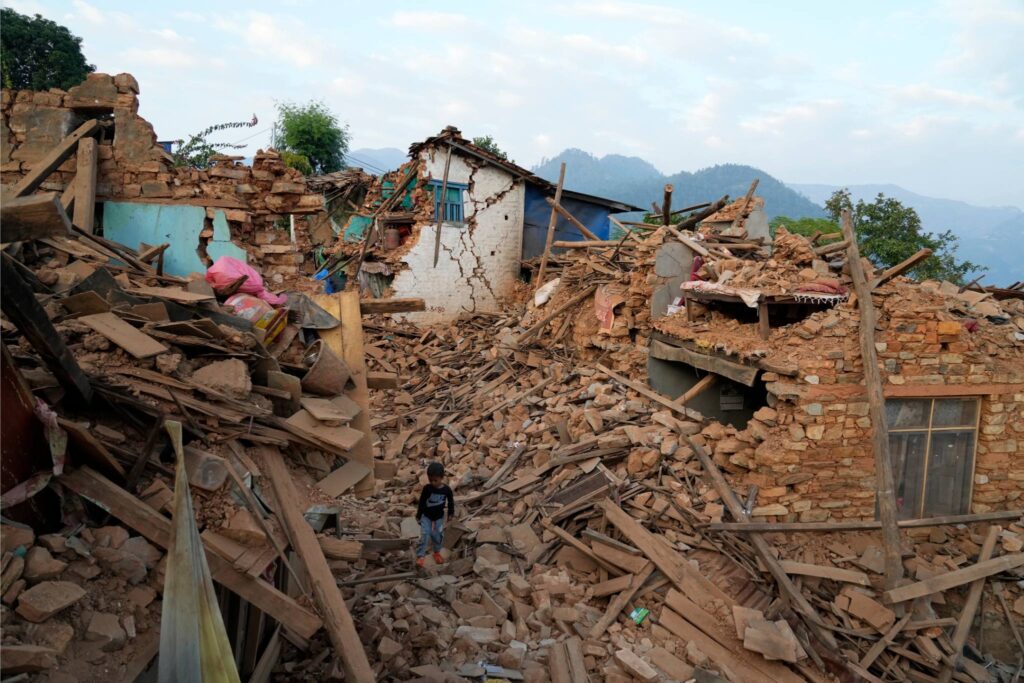
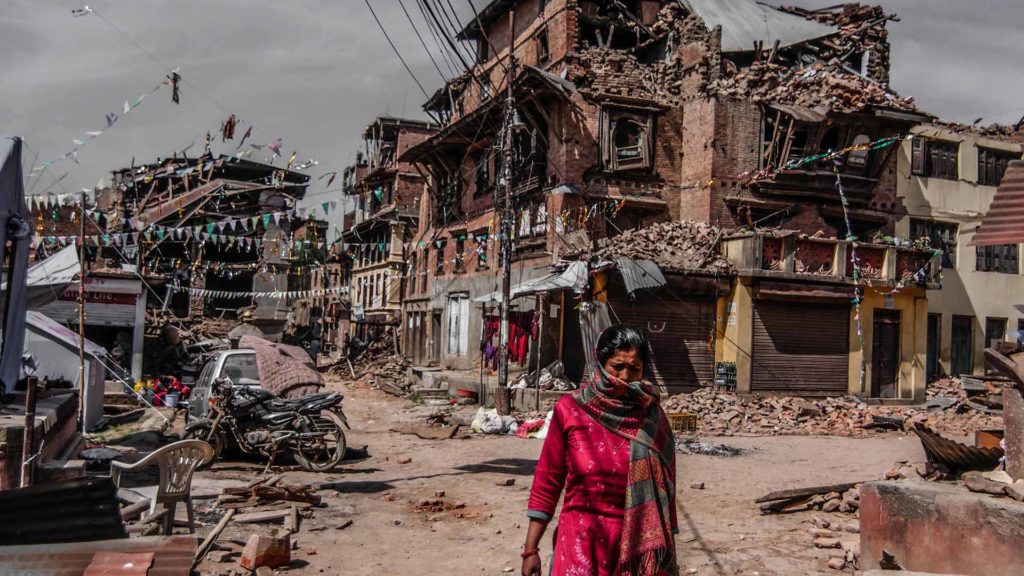
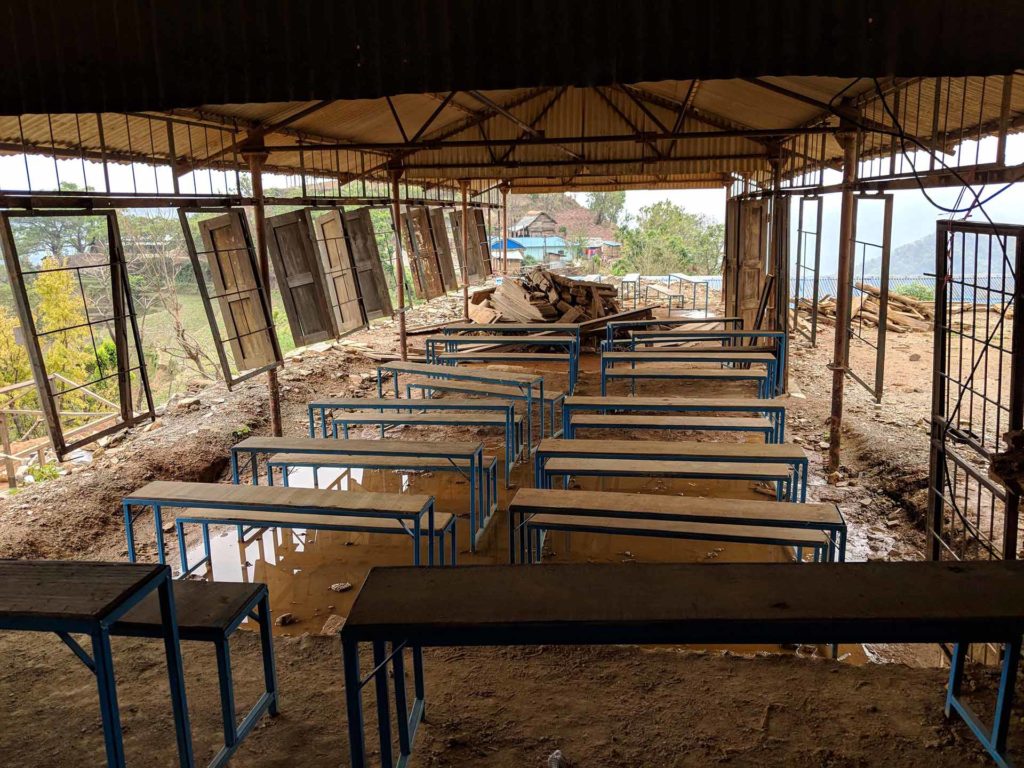
AHAH’S COMMITMENT TO NEPAL
All Hands and Hearts (AHAH) arrived in Kathmandu just 72 hours after the first earthquake, beginning what would become a ten-year, and counting, commitment to Nepal’s recovery.
Over the past decade, AHAH has supported 30 schools across the country, directly impacting the lives of over 11,000 students. The impact goes beyond just classrooms. Our work has also provided essential Water, Sanitation and Hygiene (WASH) facilities, including bathrooms, handwashing stations and safe drinking water through new filtration systems. We’ve demolished unsafe structures from schools to ensure these community spaces are safer and more resilient to future hazards. These efforts have been complemented by introducing a wide range of adaptive initiatives, including disaster risk reduction (DRR), menstrual hygiene management, child protection programs, hygiene training and community-led projects, which has led to the support of 30,700 people across Nepal’s most devastated districts.
While much progress has been made, ten years later, many schools remain unsafe, vulnerable and still in need of urgent support.
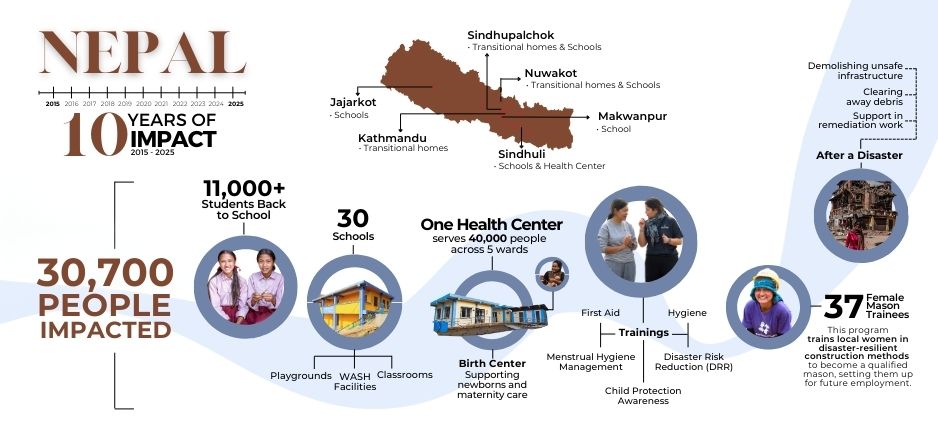
THE DAY EVERYTHING CHANGED
For Daulat Singh Thing, former principal of Shree Thakureshwor Basic School, the memory of the earthquake is still vivid. He recalls traveling to Kathmandu when the ground began to shake violently. “It was really scary,” he shares. “Rocks were falling on either side of the vehicle. If it wasn’t a Saturday, I feel I wouldn’t have been alive because the classroom I used to teach in was fully caved in during the earthquake. I might not have made it out alive.”
His school and the surrounding community were devastated. “Almost 90% to 95% of houses were destroyed,” he explains. “The school was also devastated. Three to four classrooms were fully destroyed, and the rest had cracks, making it impossible to continue regular classes.”
Students faced not only the loss of their school but also deep psychological distress. “The children were extremely scared,” he says. “At home, circumstances looked dire, and at school, they had to face the same situation. They feared the next earthquake. The frequent aftershocks added to their fear and mental stress.”
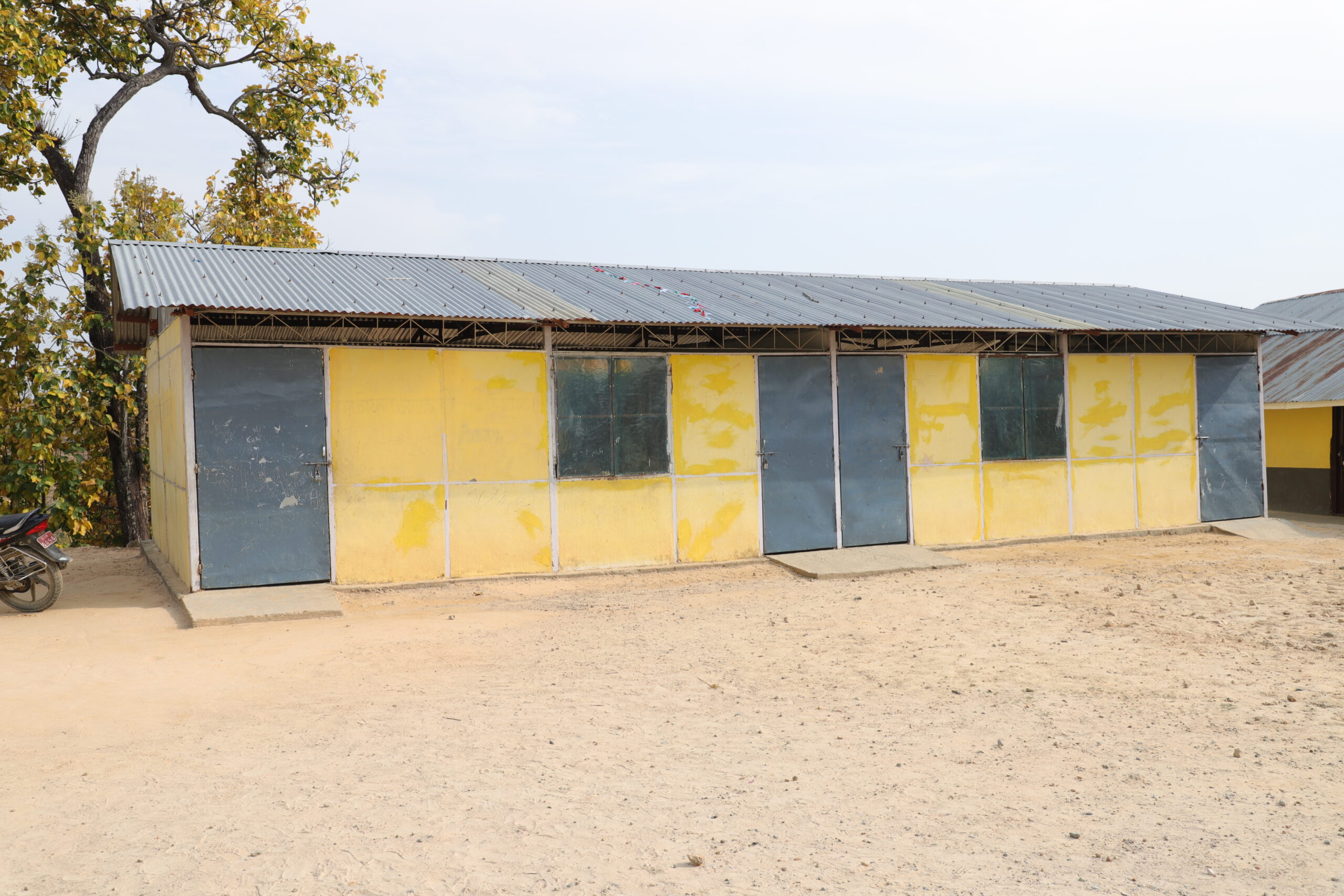
THE ROAD TO REBUILDING
In the immediate aftermath, education resumed in makeshift temporary learning spaces (TLSs), which offered some relief. “After the TLSs were set up, it did become easier to some extent,” Thing notes. “But we needed better structures.”
Shree Thakureshwor Basic School was one of the many schools AHAH rebuilt in Nepal. Through a collaborative effort with local leaders and international volunteers, AHAH worked to reconstruct the school, ensuring it was structurally safe and designed to promote long-term learning. The results were beyond what anyone had imagined. “Comparing the buildings made by AHAH and the one we had before, there is a huge difference,” says Thing. “The children hadn’t dreamt of studying in such a nice-looking school.”
Beyond its new classrooms, the school gained crucial improvements: a proper water system, a separate menstrual hygiene facility and a dedicated computer lab. These additions transformed Shree Thakureshwor Basic School into a model institution within the Marin Rural Municipality. “This has become a state-of-the-art school. In the whole of Marin Rural Municipality, they call this an exemplary school.”
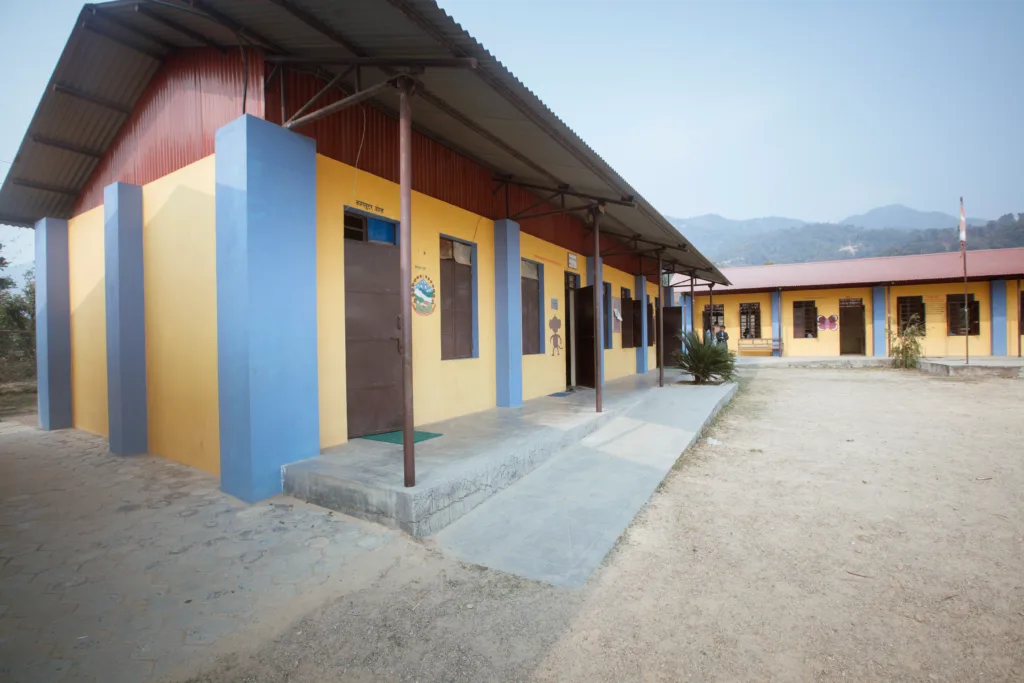

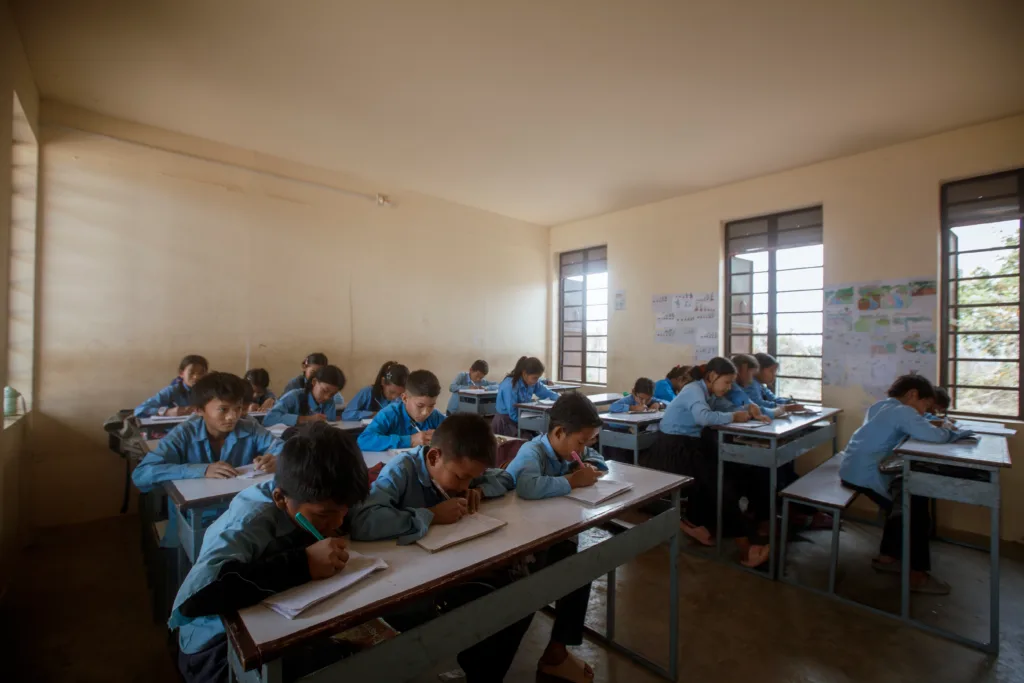
A LASTING IMPACT
The impacts of the school rebuild are more visible than ever. Student enrollment and attendance have significantly improved. “Unless they are very ill, children prefer to come to school,” Thing observes. “We can see that the building has led to better attendance.”
The school’s improved infrastructure has also contributed to higher academic performance. “Last year, students who graduated from this school went on to attend three different schools,” Thing shares. “In each of those schools, among class sizes of 150, 100 or 80 students, our graduates earned 1st, 2nd and 3rd positions. These results show that we have done well, thanks to better infrastructure and the teamwork of teachers.”
Beyond academics, the school has become a launchpad for future leaders. Several former students have gone on to become government officials and teachers. “Four to five of them have become permanent teachers,” Thing proudly shares. The school is creating lasting, generational impacts within the community, shaping the lives of students and the people around them for years to come.
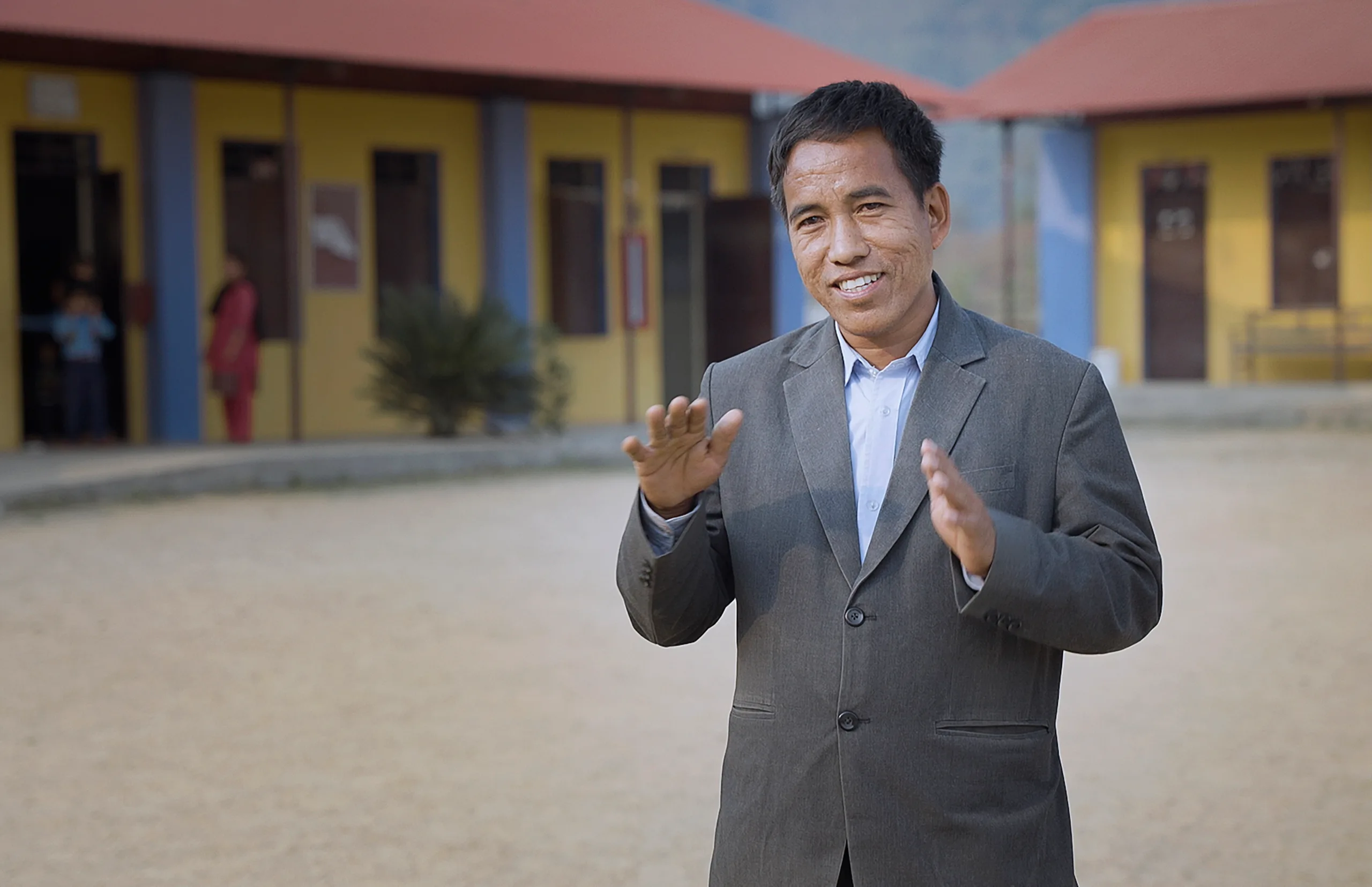
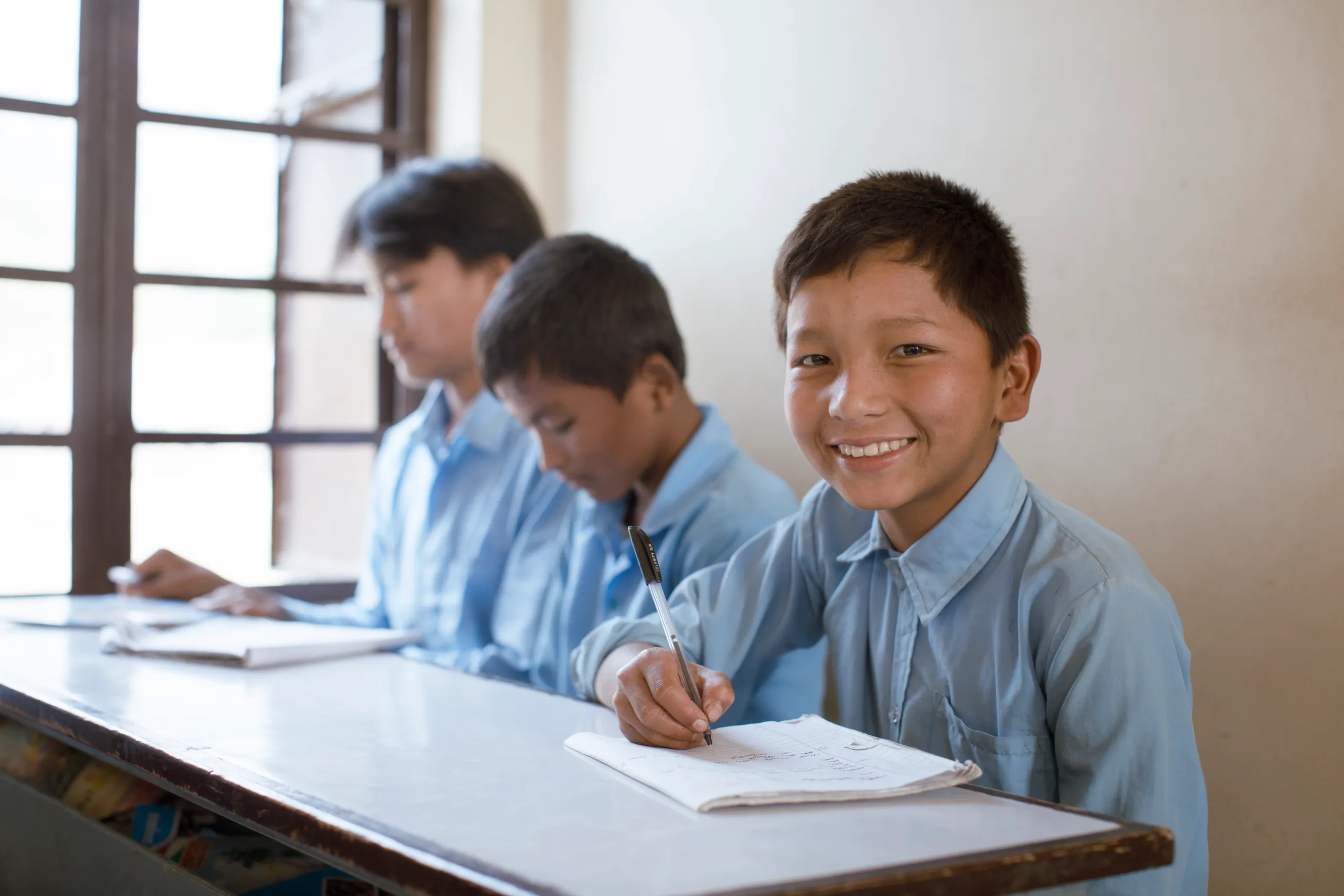
LOOKING AHEAD: THE WORK IS NOT DONE
While the progress made over the past decade is remarkable, the work is not over yet. Across Nepal, many students are still learning in unsafe or temporary spaces, conditions that we’ve seen can severely impact their education, well-being and future opportunities. The transformation at Shree Thakureshwor Basic School shows what’s possible when students have access to safe, well-equipped learning environments—something every child deserves.
“Good amenities make a difference. Learning in hard circumstances versus learning with ease makes a remarkable difference in shaping a student’s future,” he explains. Beyond simply restoring schools to their previous state, there is a critical need to build safe, welcoming environments that encourage learning.
“Now, we have a good building, a playground and computer labs, which have made it possible to provide quality education and a good environment for children’s well-being. Every school should have this,” Thing says.
JOIN US IN CONTINUING THE JOURNEY
A decade after Nepal’s devastating earthquake, All Hands and Hearts remains committed to empowering communities through education. Shree Thakureshwor Basic School’s success over time stands as living proof that rebuilding is about more than just constructing safe classrooms.
As we reflect on the past ten years, we also look ahead. The need for continued support is critical to ensure that schools like Shree Thakureshwor can provide the best possible education for future generations. Whether through donations, partnerships or volunteer efforts, your support for AHAH’s school rebuilds truly make a lasting impact.
Join us in celebrating the resilience of Nepal’s communities and in strengthening the foundation for a brighter future. Donate today, become a monthly recurring donor, volunteer or spread the word—because rebuilding brighter futures doesn’t stop at ten years.
WAYS TO GET INVOLVED
Builders are a passionate group of givers supporting our work financially every month. By becoming a Builder, you bring assistance and hope to disaster-affected communities by ensuring we can arrive early and stay late.
Help us to continue making an impact in the world.
One of the most effective ways to support our efforts is by joining us on a program! Volunteering provides valuable skill-building opportunities and contributes directly to disaster recovery, positively impacting everyone involved.
Together we can collaborate to support communities most efficiently.
The Pitching Change Program allows cardholders to enroll their Visa or Mastercard and round up their purchases to the nearest dollar in support of All Hands and Hearts. The accumulated change is donated to help communities recover from disasters.












